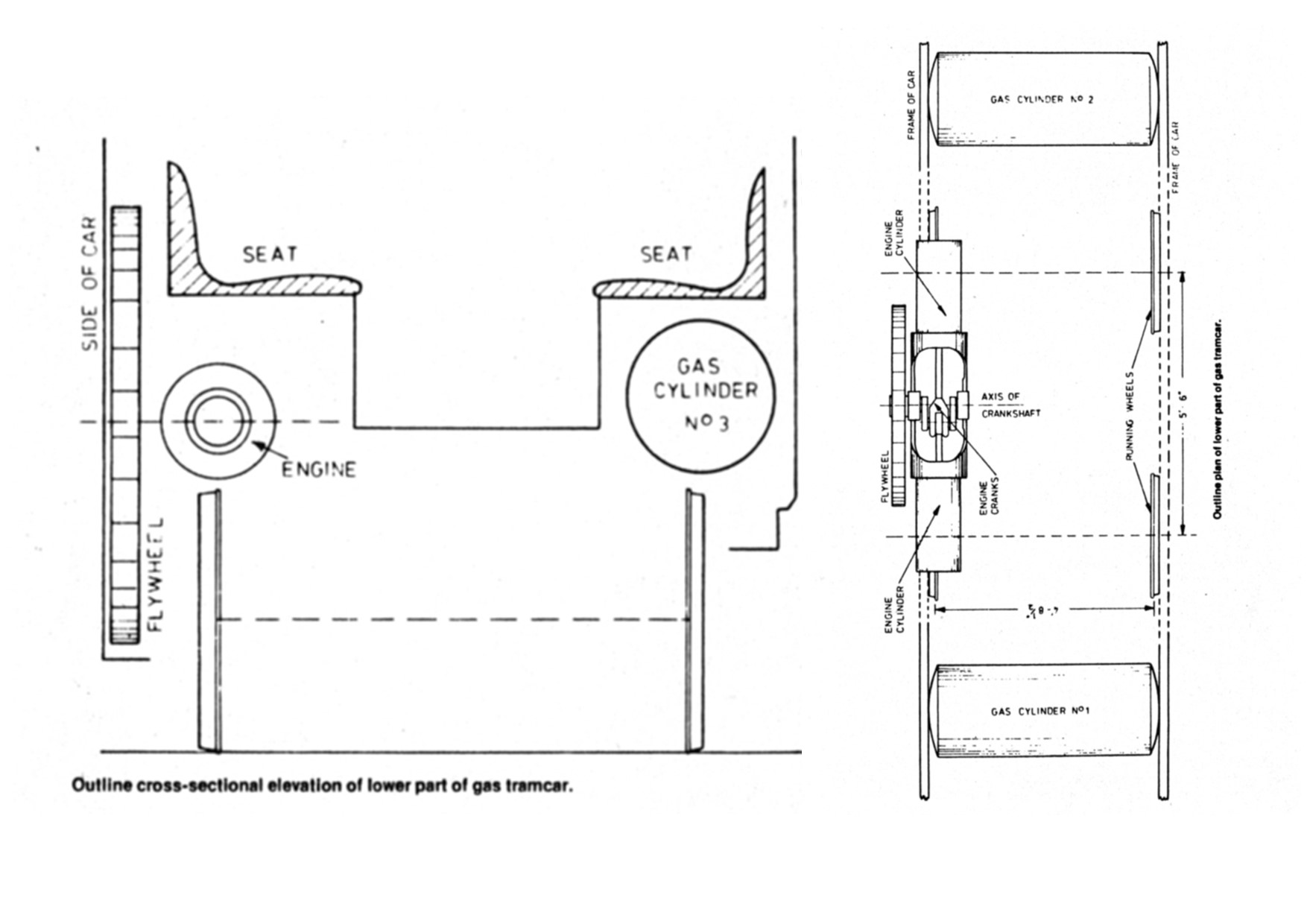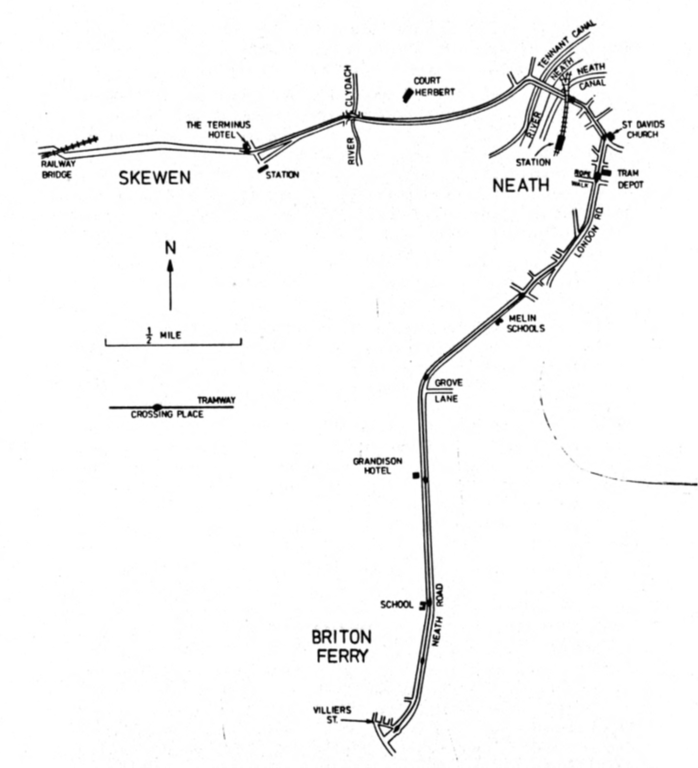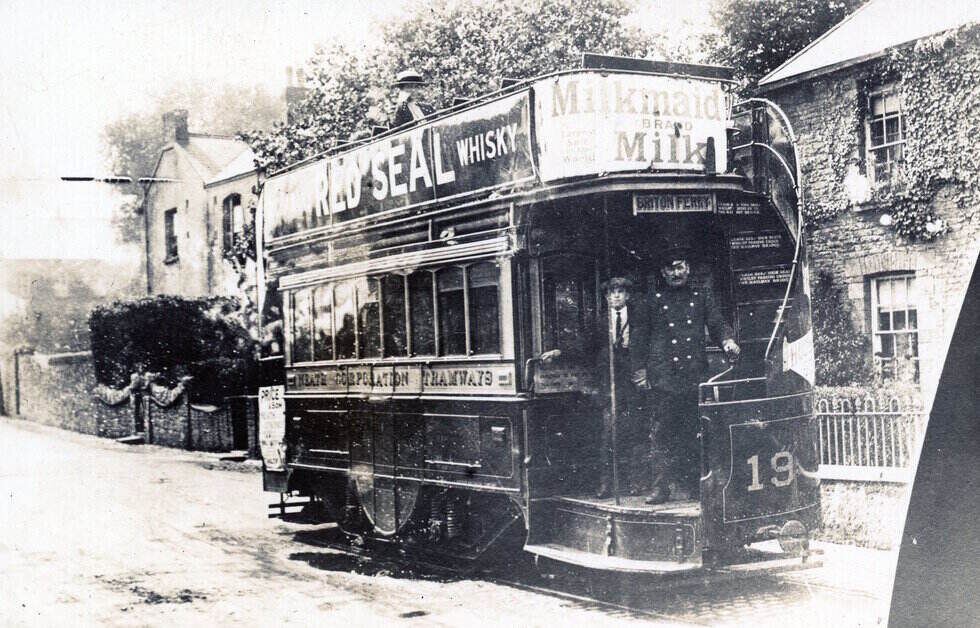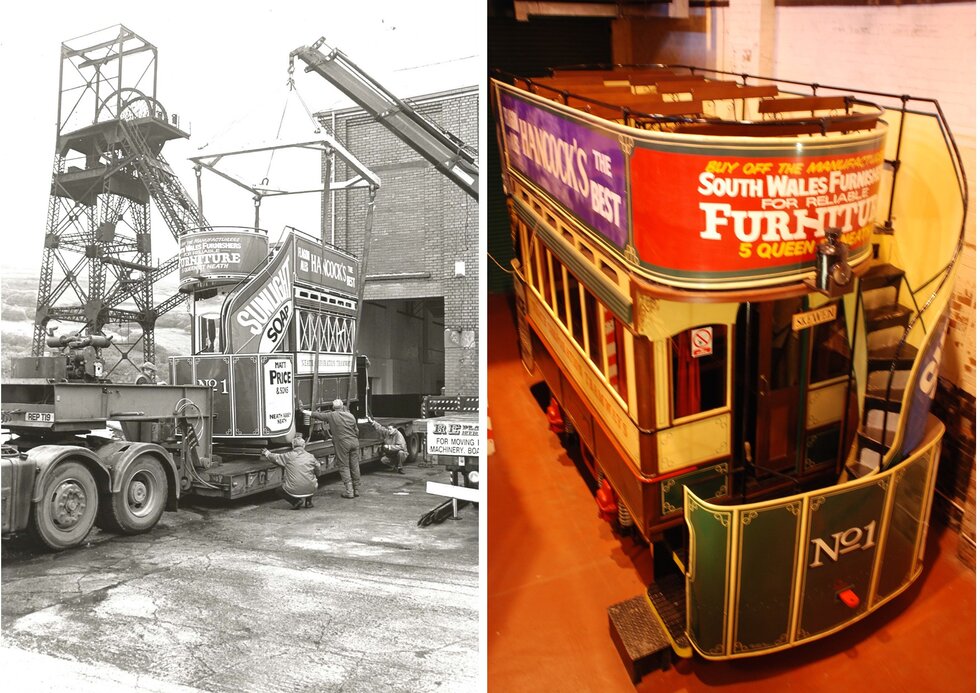31st August 2024 marks the 125th anniversary of the opening of Neath Corporation (gas-powered) Tramways, situated in South Wales, which was one of Britain’s most unusual first generation tramways.
In common with most of Britain’s municipal tramways, Neath’s started off as a horse tramway that was owned and operated by a private company. When the Corporation took control of the system in 1897, it decided to modernise it by opting for gas propulsion rather than electrification, as favoured by all but three of mainland Britain’s tramway operators (the others being Matlock and Morecambe).
The technology had been developed by a German company (Lührig of Dresden) and used compressed town gas (made from coal) that was stored at the depot and pumped into three cylinders housed under the lower deck on each tramcar. The gas powered an internal combustion engine, one of the most distinctive features of which was a large flywheel, located on one side of the tramcar, giving it an asymmetrical appearance when viewed from the sides.

Image 1 (left): Cross-sectional vertical elevation of lower part of gas tram showing the location of one of the gas cylinders and flywheel. Image 2 (right): Horizontal cross-sectional image of lower part of gas tram showing location of the other two gas cylinders in relation to the internal combustion engine and flywheel. The original images featured in the transactions of the Neath Antiquarian Society, reproduced in an article by Gordon Tucker that appeared in Tramway Review, vol. 14, 1981, pp. 75-85.
Instead of operating the system itself, the tramway was initially leased to the British Gas Traction Company, which also ran two other British gas-powered tramways at Lytham St. Annes and Trafford Park in Manchester. This company went into liquidation shortly afterwards and a new company – the Provincial Gas Traction Company – was set up to operate the lease instead.
The standard-gauge tramway itself was just under four miles in length and linked Neath with Skewen to the west and Briton Ferry to the south. The main depot housing the compression machinery was located centrally at Neath, which meant that the longest journey to be travelled on one charge was the five-mile return journey to and from Briton Ferry. Once back at the depot, the recharging process was a very simple operation that only took two minutes once it was connected to a hydrant that was located under a cover flap beneath the roadway.

Image 3: Route map of Neath Corporation Tramway (source: transactions of the Neath Antiquarian Society, reproduced in an article by Gordon Tucker, Tramway Review, vol. 14, 1981, pp. 75-85).
There is some confusion regarding the total number of tramcars and their precise origins. Some (presumably new tramcars) were supplied by the British Gas Traction Company for the start of operations, while others were known to have been acquired second-hand from Lytham St. Annes after its conversion to electric traction in 1903.
It is thought that the original batch of four cars may have been built for the opening of the tramway in 1899 by Ashbury Railway Carriage Company Ltd. These were relatively small, seating 16 inside and 24 on the top deck. They were supplemented by an unknown number of larger cars (including numbers 18-23) that were built by Lancaster Railway Carriage and Wagon Co. Ltd. These seated 22 inside and 30 on the top deck.

Image 4: Postcard featuring Neath 19, one of the larger trams obtained from Lytham in 1903, photographed at Briton Ferry. The position of the flywheel is clearly seen on this side of the tramcar (source: National Tramway Museum collection).
The tramcars themselves were heavy and under-powered and required a lot of maintenance. There were even reports of passengers being asked to alight and help push the trams up the steep St. John’s Church Hill in Skewen. Complaints were made about over-crowding and the infrequency and unreliability of the service.
The Trafford Park tramway switched from gas to electric traction in 1908, leaving Neath as the last survivor. By 1916 the Provincial Gas Traction Company was itself in serious financial difficulty and surrendered its lease to the Corporation with effect from 10th June 1916, prior to its demise.

Image 5: Neath 20 with one of the original smaller cars, photographed in the depot at the time of the tramway’s closure in 1920 (source: National Tramway Museum collection).
By this stage, the fleet of tramcars was pretty well worn out, and the Corporation was only able to provide a minimal service by cannibalising some of the cars to keep the remaining ones going. The track was also in a poor state of repair. The Council did investigate the possibility of electrifying the service but abandoned the idea once the South Wales Transport Company announced its plans to introduce a petrol bus service along the route.
So, the world’s last commercial gas-powered tram service ceased to operate on 8th August 1920, just short of 21 years after its inauguration. Most of the remaining fleet of tramcars was presumably scrapped at this point, though one of the smaller 40-seater trams, minus its engine, survived as a garden shed at Melyn until it was discovered in 1985 and taken into preservation. This is the only remaining example of a gas tram in the world. Following its restoration by Neath Borough Council’s Training Agency, the tram was put on display at Cefn Coed Colliery Museum five miles north of Neath.

Image 6: Surviving Neath Corporation gas tram arriving at Cefn Coed Colliery museum following its restoration. Photograph reproduced by kind permission of the People’s Collection, Wales. © Cefn Coed Colliery Museum 2024.

Images 7 & 8: Neath Corporation tramcar No. 1 at Cefn Coed Colliery museum following its restoration. Photograph reproduced by kind permission of the People’s Collection, Wales. © Cefn Coed Colliery Museum.
The archives here at the National Tramway Museum, Crich, contain various reports relating to Neath Corporation Tramways that featured in contemporary Tramway Journals. We also have an article by Bernard Lloyd published in the Welsh magazine ‘Country Quest’ in 1985, entitled ‘Memories of the gas trams that made Neath unique’. This features some personal recollections of the tramway including those of David Knight, who was one of the original drivers. He was able to recall accidentally running into a coal cart on his first trial run in 1917 and colliding with a milk cart at Briton Ferry on his very last trip in 1920!
Please note that as of August 2024, the Cefn Coed Colliery Museum is temporarily closed for essential maintenance – please check their website for updates: https://www.cwmdulais.org.uk/cefncoed/
With thanks to National Tramway Museum volunteer Jim Dignan for producing this article.
Image references:
- 1 – 3: The original images featured in the transactions of the Neath Antiquarian Society, reproduced in an article by Gordon Tucker, Tramway Review, vol. 14, 1981, pp. 75-85.
- 4 – 5: National Tramway Museum collection.
- 6 – 8: Reproduced by kind permission of the People’s Collection, Wales. © Cefn Coed Colliery Museum 2024.
